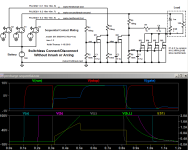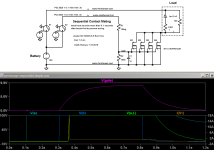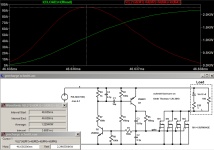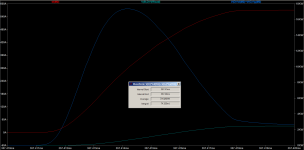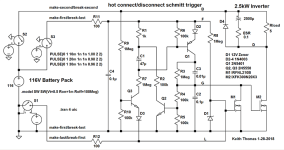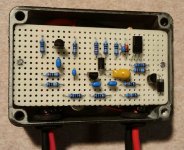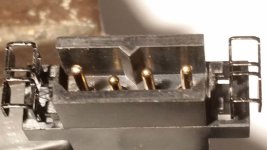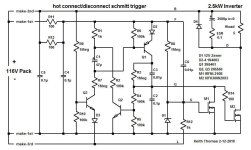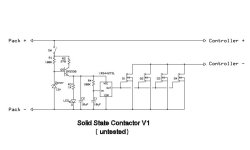The real world has spoken and, well, I've joined the blown fets club. It did work at first. I brought it up slowly and carefully, first test with a load was driving a 100W incandescent light bulb. That is 10 ohms cold so it has a real inrush. That worked exactly as expected. I changed the circuit slightly from the last post, added a diode in the emitter of Q1 and increased C1 to 47uF. That gives a nice turn on delay of about half a second and keeps the capacitor voltage polarized. So the light bulb came on with a noticeable delay and all was well. I have the PowerMod connector with pre-mate pins for power and ground and post-mate for the pre-break disconnect turn off. Plugging and unplugging with the light bulb was flawless, no pop, no arc, very nice.
OK, the reason for building this was to drive my inverter so that was next. I hot plugged it with the inverter connected and got a very nasty pop, oops, that wasn't in the plan. Went back to the light bulb load and no delay, looks like the fets are shorted. Ohmmeter verifed that and the autopsy showed two of the four are dead shorted, the other two apparently ok, but I won't use them again.
So I'll show the construction. It came out nice and I'll do something similar for plan B, not sure what yet. I used a very small aluminum enclosure so it was a little bit of a challenge to fit it in. Fets are mounted insulated and wired like this

A couple of screws hold the vector board with the schmitt driver above the fets

Here's the bottom to show the wiring. Four connections to the board, plus, minus, gate and pre-break.

Here's the whole thing with it's light switch and resistor predecessor for comparison
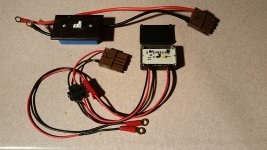
So now what? I could go back to the ramp with switch version or maybe try the sequential contact switchless idea. Or I could give the gate slamming idea another go. I really like the efficiency of fast switching and the ability to connect directly to a load is nice. My simulation showed that the power dissipation during turn on with a 1kW load is 10,000 times less with the schmitt drive than the linear ramp. So why did it fail? My guess is that the transient at connection caused the gates to get turned on enough to get into the linear region, that got arcing started and bang, dead fets. So maybe another set of contacts to keep those gates really off during connection would save them. I'll decide what to do while I wait for the next UPS parts delivery...
